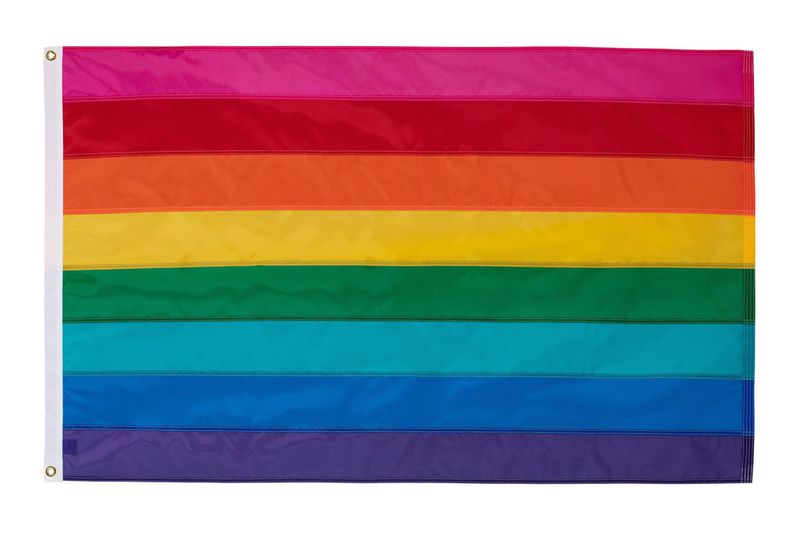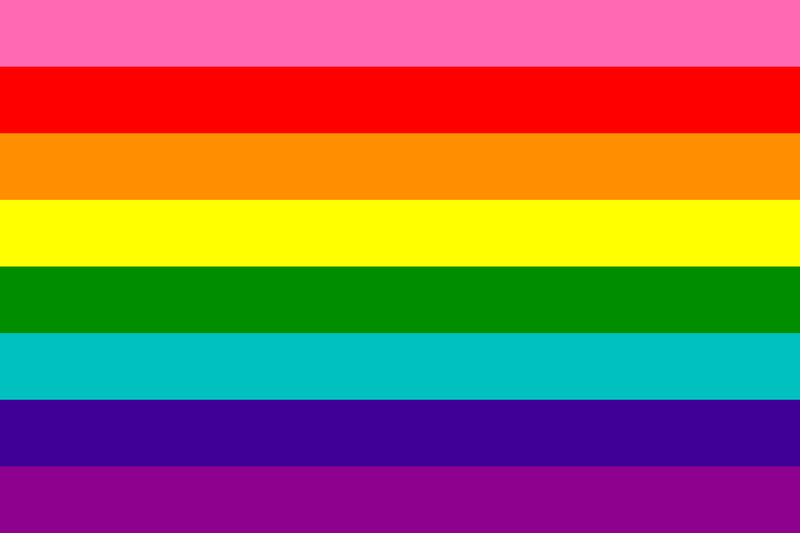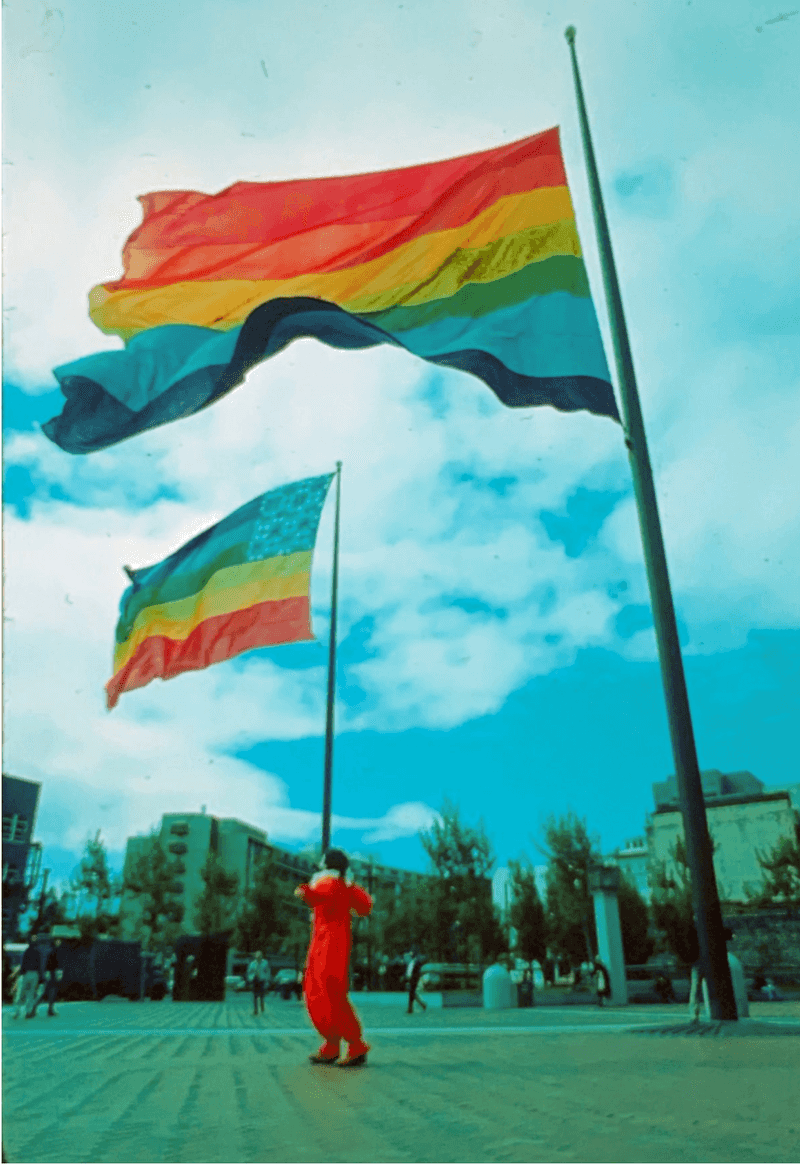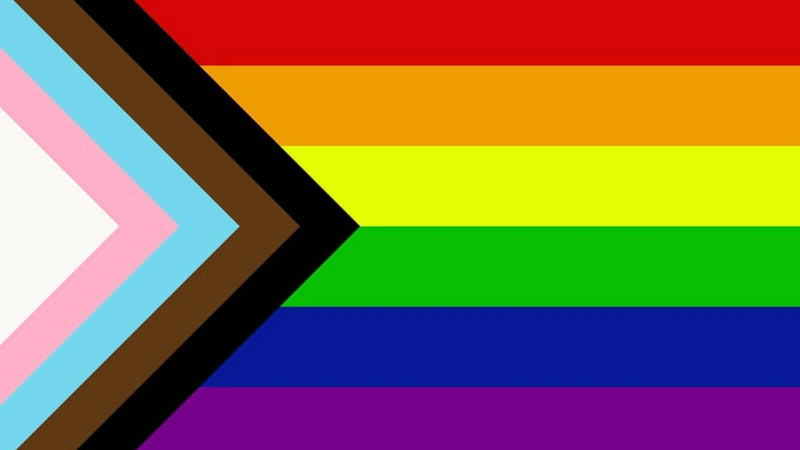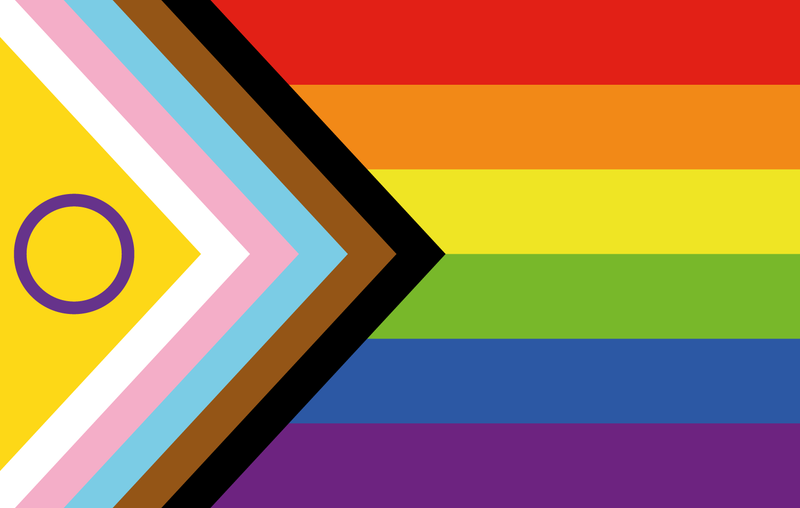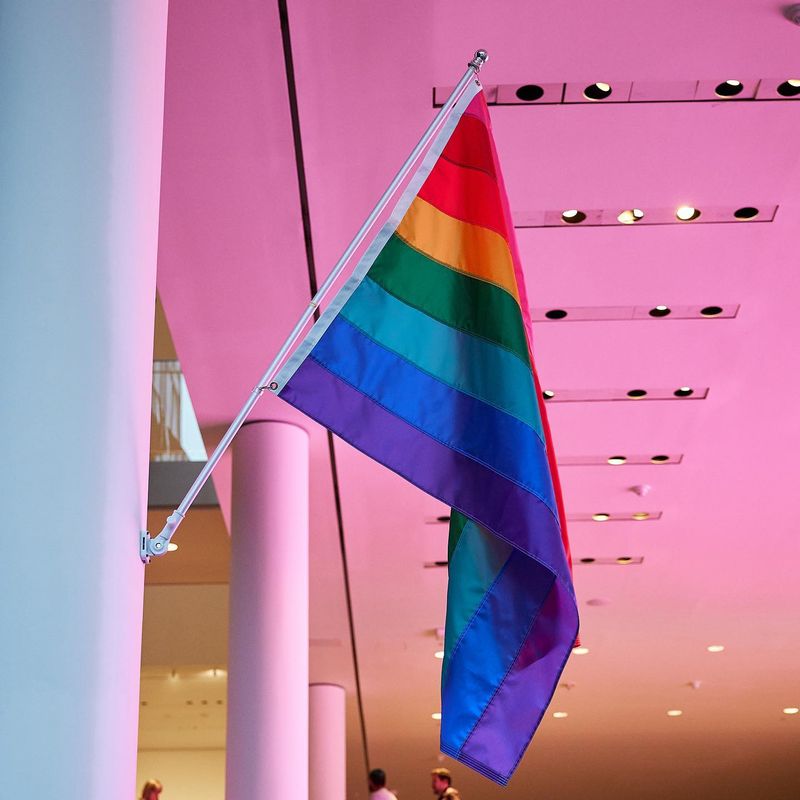The rainbow Pride flag is more than just a colorful banner – it’s a powerful symbol of hope, diversity, and solidarity for the LGBTQ+ community. This iconic emblem wasn’t always the six-colored flag we recognize today. Its creation and evolution tell a fascinating story of activism, inclusion, and representation that spans over four decades.
1. Gilbert Baker’s Visionary Creation
In 1978, a talented artist and Vietnam War veteran named Gilbert Baker forever changed LGBTQ+ history. Encouraged by his friend Harvey Milk, one of America’s first openly gay elected officials, Baker set out to create a positive symbol for the community.
Baker chose the rainbow for its natural beauty and representation of diversity. Having taught himself to sew after honorable discharge from the military, he channeled his artistic talents into creating something meaningful.
His handmade flag would soon become a global emblem of pride, hope, and resistance against oppression.
2. Eight Original Colorful Stripes
Baker’s first rainbow flag featured eight vibrant stripes, each carrying special meaning. Hot pink represented sexuality, red symbolized life, and orange stood for healing.
Yellow celebrated sunlight while green honored nature. Turquoise represented magic and art, indigo reflected serenity, and violet embodied spirit. Together, these colors captured the full spectrum of human experience.
The original flag was hand-dyed and stitched with care, requiring nearly 1,000 yards of cotton. Baker’s thoughtful color selection demonstrated his intention to create a symbol that celebrated the diversity and wholeness of the LGBTQ+ community.
3. First Public Appearance at San Francisco Pride
The rainbow flag made its triumphant debut on June 25, 1978, at San Francisco’s Gay Freedom Day Parade. Baker and a team of thirty volunteers had worked tirelessly at the Gay Community Center to hand-dye and stitch two massive flags.
These inaugural banners flew proudly at United Nations Plaza, instantly capturing hearts and imaginations. One featured rainbow stripes, while the other displayed stars in rainbow colors against a blue background.
The crowd’s enthusiastic reception confirmed Baker’s creation had struck a powerful chord. That sunny June day marked the beginning of what would become an enduring global symbol.
4. Evolution to Six Colors
The path to today’s familiar six-striped flag came through practical necessity. When Baker sought to mass-produce his creation after the assassination of Harvey Milk, he discovered hot pink fabric was prohibitively expensive, reducing the flag to seven stripes.
Later, organizers of the 1979 San Francisco parade needed flags that could be split in half to decorate both sides of the parade route. To achieve symmetry, the turquoise stripe was eliminated.
Indigo was eventually replaced with royal blue, creating the six-color version (red, orange, yellow, green, blue, and violet) that became standardized and recognized worldwide.
5. Symbol of Global Movement
The rainbow flag transcended its San Francisco origins to become a universal emblem of LGBTQ+ rights. Its adoption gained momentum after the 1979 assassination of Harvey Milk, when demand for the flag surged as a symbol of resilience.
By the mid-1980s, the flag had spread to major cities worldwide. During the devastating AIDS crisis, the flag became a rallying symbol for a community fighting for recognition and healthcare.
Today, the rainbow flag flies proudly on government buildings, embassies, and businesses around the globe during Pride month, representing both celebration and ongoing advocacy for equality.
6. Philadelphia’s Inclusive Update
A groundbreaking evolution occurred in 2017 when Philadelphia’s Office of LGBT Affairs unveiled a new version of the pride flag. This redesign added black and brown stripes to explicitly acknowledge LGBTQ+ people of color.
The modification addressed concerns about racism within LGBTQ+ spaces and highlighted intersectional challenges faced by queer people of color. Designer Amber Hikes called it the “More Pride, More Color” campaign.
Though initially controversial among some who felt the original design already represented everyone, the Philadelphia flag sparked important conversations about inclusion and has been embraced by many organizations committed to intersectional justice.
7. Daniel Quasar’s Progress Pride Flag
Graphic designer Daniel Quasar revolutionized the pride flag in 2018 with their “Progress Pride Flag.” This redesign incorporated a chevron along the hoist featuring black, brown, light blue, pink, and white stripes.
The black and brown stripes honored LGBTQ+ people of color, while the pink, light blue, and white represented transgender individuals. Quasar’s design brilliantly placed these elements as an arrow pointing rightward to symbolize forward movement.
The Progress Pride Flag quickly gained popularity for its visual representation of marginalized communities within the LGBTQ+ spectrum. Its thoughtful design acknowledged the ongoing journey toward greater inclusion and equality.
8. Intersex-Inclusive Redesign
In 2021, intersex activist Valentino Vecchietti introduced yet another meaningful update to the pride flag. Building upon Quasar’s Progress design, Vecchietti added a yellow triangle containing a purple circle – the internationally recognized intersex symbol.
This addition acknowledged the estimated 1.7% of the population born with intersex traits. The redesign highlighted the unique challenges faced by intersex individuals, who often experience unwanted medical interventions without consent.
Vecchietti’s Intersex-Inclusive Progress Pride Flag represented another step toward comprehensive representation within the ever-evolving symbol of LGBTQ+ unity and diversity.
9. Recognition as Cultural Treasure
The rainbow flag achieved prestigious cultural recognition in 2015 when New York’s Museum of Modern Art added it to their permanent design collection. This acquisition acknowledged the flag’s profound impact on visual culture and social movements.
Gilbert Baker donated a hand-dyed cotton example of the flag, cementing its status as not just a political symbol but an artistic achievement. The flag has inspired countless adaptations in fashion, advertising, and architecture.
Beyond museums, the flag has been immortalized in everything from the world’s largest rainbow flag (a mile-long banner displayed in Key West) to tiny rainbow pins worn as everyday symbols of allyship and identity.
10. Gilbert Baker’s Enduring Legacy
Gilbert Baker continued his activism until his unexpected passing in 2017 at age 65. Throughout his life, he refused to trademark his creation, believing it belonged to everyone in the community.
In 2003, to commemorate the flag’s 25th anniversary, Baker created a 1.25-mile-long version that stretched from the Gulf of Mexico to the Atlantic Ocean. His obituaries described him as the “Gay Betsy Ross,” acknowledging his contribution to American cultural history.
Baker’s memoir, “Rainbow Warrior,” was published posthumously in 2019, sharing the remarkable story of how a Kansas-born army veteran created one of the world’s most recognizable symbols of freedom.

